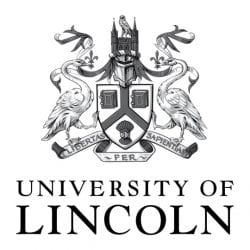 An unprecedented experiment to examine the bacteria, both good and bad, which grow on human skin has taken centre stage in a new BBC documentary exploring one of the most pressing scientific issues of our time.
An unprecedented experiment to examine the bacteria, both good and bad, which grow on human skin has taken centre stage in a new BBC documentary exploring one of the most pressing scientific issues of our time.
The programme examines important scientific problems and fascinating technological advancements and asks the question: have we caused the resistant superbug crisis by overusing antibiotics?
At the heart of the film is a world-first experiment based around “Microbial Michael” – a life-sized living bacterial clone of TV presenter, doctor and scientist Michael Mosley. The clone, described in the programme as “the world’s largest petri dish”, was created by leading microbiologist Professor Mark Clements, from the University of Lincoln, UK, in collaboration with artist Mellissa Fisher and colleagues at Imperial College London.
Professor Clements and Mellissa created a life-size replica of Michael Mosely’s body out of agar – a jelly-like substance obtained from algae which is commonly used in scientific experiments. Their creation represents the world’s first human-sized 3D sculpture to be made out of agar, and in order to successfully complete the experiment, they created a new casting technique and specially commissioned a secure casing to enclose the figure.
With the aim of taking a closer look at the bacteria which grow on human skin, Professor Clements took samples of bacteria from Michael Mosley’s own body and transferred the microbes to his agar clone. Half of the sculpture contained a standard agar so that the bacteria present on Michael’s skin could grow and spread over its surface, but the other half was enriched with a broad-spectrum antibiotic so that the presence of any antibiotic-resistant bacteria would be revealed.
Over the course of several days as the microbes grew and spread, the team was able to observe the variety of good and bad bacteria growing on the human body, while also examining bacteria which have developed antimicrobial resistance and could thrive even on the half of the clone enriched with antibiotics.
During the documentary Michael discovers to his surprise that bugs which have acquired resistance to antibiotics are growing on his agar clone – and that some of them could even turn nasty if his immune system were ever to become compromised.
Professor Clements, Chair in Science Education at the University of Lincoln, said: “This experiment allowed us for the first time to see the diverse range of bacteria which are present on different sites of the human skin, and observe the way that beneficial bacteria compete with potentially harmful ones. The results are fascinating because they reveal the invisible microbial world that everyone has growing on their skin, and show that some of these can potentially be harmful and can even carry antibiotic resistance.
“Antimicrobial resistance is one of the most worrying scientific issues we face today. For 70 years we have waged war against harmful bacteria using antibiotics, but now more and more infections are becoming resistant to those antibiotics. One of our most significant concerns is the emergence and spread of superbugs which are resistant to all current classes of antibiotics used in medicine. Experts have warned that unless we find new forms of antibiotics and alternative treatments we will face a massive health crisis in the near future.”
Travelling around the world, the documentary explores some of these alternative treatments and groundbreaking academic research into new forms of antibiotics.
Michael Mosley vs. The Superbugs aired on BBC4 on Wednesday 17th May 2017 and is available to watch again on the BBC iPlayer at: http://www.bbc.co.uk/iplayer/episode/b08qkz77/michael-mosley-vs-the-superbugs.

